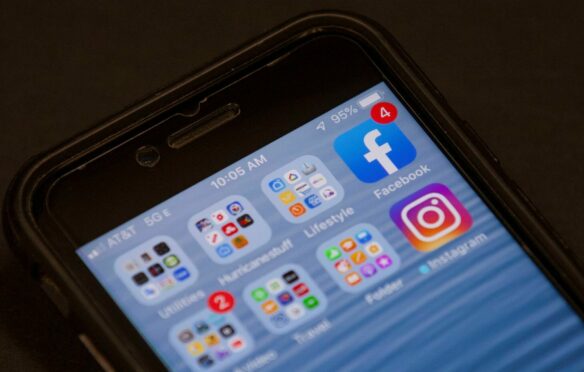
My youngest daughter turned 18 on Wednesday. I know, I don’t look old enough, right?
I had a good old sentimental wallow in photos of previous birthdays; parties in church halls with rabbit out the hat magicians, party games, cake and chocolate-smeared faces. Innocent times with my sweet little girl.
So, how do you want to celebrate this year I asked her? Let’s go to the pub and then go clubbing was the reply. Of course, I’ll not be going. My dancing days are long behind me. I’ll be waiting up in the early hours though, watching the dot on Find My Phone as she makes her way home because even though she’s officially an adult, the instinct is still to protect her, an instinct that will never go away.
It used to be that a parent’s biggest fears was what happened outside the front door, but there’s so much more to worry about now. Danger lurks inside the phone in your child’s pocket and on the family computer on the kitchen table.
That’s why there’s been a growing demand for more stringent policing of the internet. The UK Government’s Online Safety Bill is a long-awaited piece of legislation aimed at holding social media platforms to account for what goes on their websites. But this week it hit the headlines when an amendment to make big tech companies remove legal but harmful material was axed. Critics of that section had feared that it would stifle free speech. Ministers argue that children will still be protected as companies will have to explain how they will check their users age and that will prevent kids from accessing disturbing material.
But Labour and groups like the Samaritans say it’s a backward step and that the bill has been watered down. That’s the opinion of Scots campaigner Ruth Moss too. She told me on Tuesday night that she believes the bill is now not fit for purpose. Her online campaigning comes from cruel personal experience. Ruth’s 13-year-old daughter Sophie tragically took her own life eight years ago after looking at harmful content on her iPad.
The teenager had struggled with mental issues for years and her family had done everything they could to protect her, enforcing strict parental controls online. But they discovered after her death that she’d been looking at very disturbing self-harming material. Heartbreakingly, Ruth described how Sophie would be looking at this hideous stuff on the bus home with her brother as it had free WiFi.
What would have made a difference to them would have been if the content hadn’t been forced upon her because of algorithms which immediately latch on to anything you’ve been even casually looking at.
And if the content hadn’t been there in the first place. She said the sort of material Sophie was looking at may well be legal under current legislation but they were still very, very damaging to her mental health. Ruth believes that for every child like Sophie who dies by suicide from looking at damaging content, there will be hundreds of thousands of children who suffer mental health problems from being exposed to this material.
The call for stricter age verification is welcome, but computer savvy kids could find ways round it and I find that really worrying. My daughter is 18 now, but she’s still in many ways a child. Just because she has reached this milestone age doesn’t mean she is any less in need of protection.
There is a delicate balance between censoring people’s online experiences and protecting us all in this fast-moving digital world.
Mothers like Ruth have no doubts though that ensuring children are safe should be the top priority.
Maybe that is the voice politicians should be listening to.

Enjoy the convenience of having The Sunday Post delivered as a digital ePaper straight to your smartphone, tablet or computer.
Subscribe for only £5.49 a month and enjoy all the benefits of the printed paper as a digital replica.
Subscribe